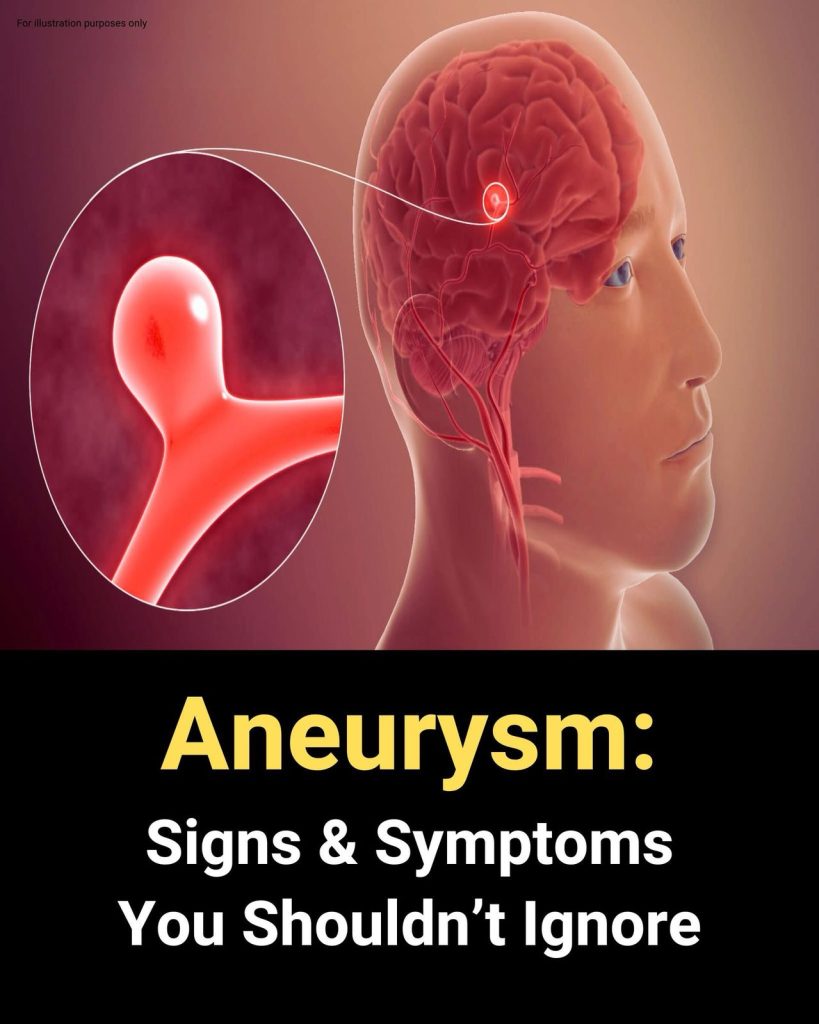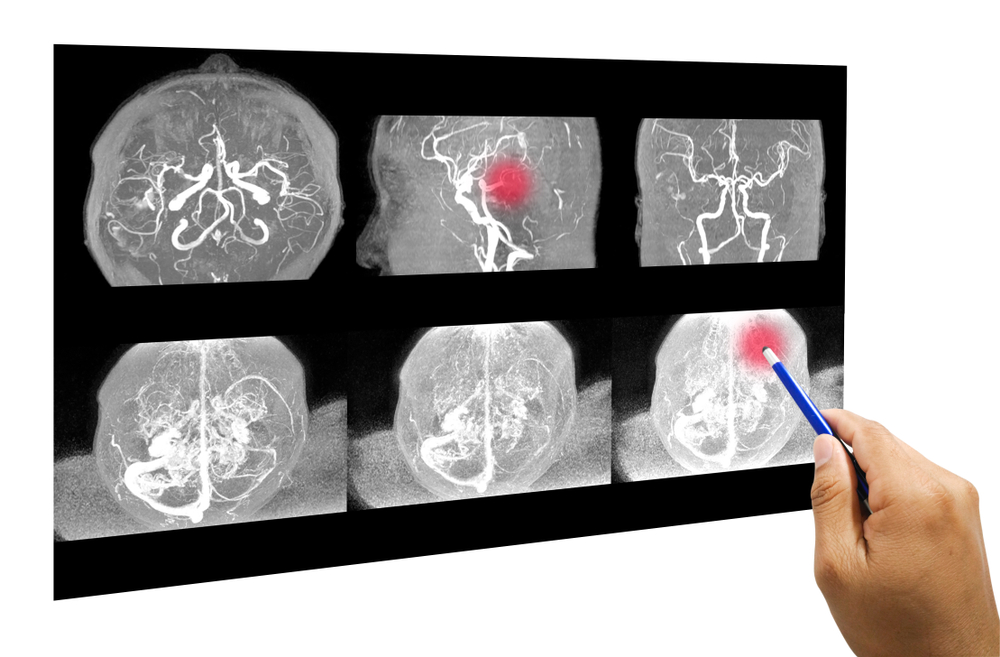
An aneurysm is a bulging blood vessel in the brain. If it ruptures, it can cause a hemorrhagic stroke. While most brain aneurysms don’t cause symptoms or health problems, a ruptured one is a medical emergency. Recognizing the signs early can help prevent brain damage or death.
Symptoms of a ruptured aneurysm

- A sudden and intense headache, often referred to as “the worst headache of my life”
- Blurry or double vision
- Disorientation or confusion
- A pupil that is more dilated than the other
- A drooping eyelid
- Fainting
- Feeling nauseous or vomiting
- Pain around one eye
- Neck stiffness
- Sensitivity to light
- Seizures
- Weakness or numbness in certain areas of the body
“The worst headache of my life”
Headaches are usually the first sign of a brain aneurysm, according to the Brain Aneurysm Foundation. Not everyone will experience all symptoms, but common ones include nausea, a stiff neck, blurred vision, and light sensitivity. If you notice these, call an ambulance instead of driving to the hospital, as ruptured aneurysms are time-sensitive and may require life-saving procedures before arrival.
Symptoms of a ‘leaking’ aneurysm
A leaking aneurysm, or sentinel bleed, occurs when blood leaks slowly for days or weeks before a full rupture. The main symptom is a sudden, severe headache that lasts for several days or even weeks. It’s crucial to seek medical attention immediately to prevent a full rupture.
What about unruptured aneurysms?

Aneurysms usually don’t show any symptoms on their own. They are often small and are typically found during screenings for other health issues. However, in some cases, unruptured aneurysms can grow larger and put pressure on the brain’s nerves. This can lead to certain signs, and if these occur, it’s important to seek immediate medical help.
Symptoms of an Unruptured Aneurysm:
- Blurred or double vision
- Pain around one eye
- Drooping eyelid
- Dilated pupil
- Weakness or numbness
- Changes in headache patterns*
*Unruptured aneurysms usually don’t cause chronic headaches, but any sudden change in headache frequency or intensity should be discussed with a doctor. Many unruptured aneurysms require no treatment, but medical advice is essential.
Genetic risk factors

Aneurysms form when the walls of the brain’s arteries become thin and fragile. While some individuals are born with them due to congenital conditions, others may have a higher risk, especially if a close family member has experienced a brain aneurysm. Women and those over 40 are particularly more susceptible to developing them.
Risk Factors & Effects
Certain health conditions increase the risk, including arteriovenous malformation, polycystic kidney disease, and Marfan syndrome. High blood pressure, smoking, alcohol, and drug use (especially cocaine) can weaken artery walls.
A rupture causes brief but dangerous bleeding, damaging brain cells and increasing skull pressure. This can quickly lead to unconsciousness, brain damage, or death.
Complications from aneurysms
Serious complications can still occur after a rupture. The blood vessel may re-bleed, nearby vessels could narrow and trigger a stroke, or fluid buildup in the brain (hydrocephalus) may cause tissue damage and pressure.
Prevention

Brain aneurysms aren’t always preventable, especially with a hereditary risk. However, quitting smoking and lowering blood pressure through a healthy diet, exercise, and limited alcohol can help. These steps also reduce the risk of other serious conditions like heart disease and kidney issues.


